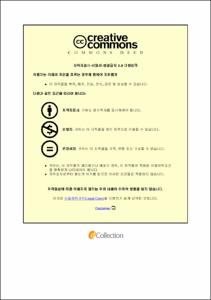Reliability Evaluation for Creep Life Prediction and Creep Crack Growth Rate of Modified 9Cr-1Mo steel
- Abstract
- Modified 9Cr-1Mo steel (ASME Grade 91, hereafter referred to as Gr. 91 steel) is a promising candidate for structural materials of Gen-IV reactor systems, such as steam generators, intermediate heat exchangers, and hot pipes in sodium-cooled fast reactors, and reactor pressure vessel in a very high temperature reactor, owing to its high creep and low cycle fatigue resistance than those exhibited by its counterparts such as 9Cr-1Mo and 2.25 -1Mo steels. Since these structures are designed for up to 60 years at elevated temperatures, they may cause creep failure, and a significant portion of the component’s life will be spent in crack propagation during the long service life. Therefore, it is necessary to reasonably establish the reliability on the long-term creep life prediction and creep crack growth rate (CCGR) behavior in the components that are subjected to creep loading for a safe design life of 60 years. To do so, this study deals with above two subjects on their reliability evaluation, as follows.
First is to evaluate a reliability of the long-term creep life prediction of Gr. 91 steel. In the creep life prediction, a new master function of a hyperbolic sine (“sinh”) form, instead of a polynomial equation which has been conventionally used well in the Larson-Miller parameter, was newly proposed. A number of creep rupture data were collected through literature surveys, and using these data, the long-term creep life was predicted by the L-M parameter. The results showed that a master curve of the “sinh” function was found to have a wider acceptance with good flexibility in the low stress ranges beyond the experimental data. In a reliability evaluation of the predicted creep rupture life, a Service Condition-creep Rupture property Interference (SCRI) model based on the Z parameter was demonstrated. The Z parameter followed a normal distribution well. From the normal distribution, a number of random variables for Zs and Zcr were generated using Monte-Carlo simulation technique. As examples for application of Gr. 91 steel, the prediction for the creep rupture life under specific service conditions was reasonably drawn from the viewpoints of reliability. The reliability of the creep rupture life decreased with increase in service time, and a higher temperature and stress conditions caused a faster deterioration. Also it decreased rapidly at the higher temperature/stress fluctuations and the large scattering of the creep rupture data.
Second is to investigate a probability in the CCGR evaluation of Gr. 91 steel. A series of CCG data was obtained from the CCG tests under various applied loads at 600℃. In the characterization of CCGR, the C* fracture parameter was used, and material constants, B and q in the CCGR equation, da/dt=B(C*)q were analyzed by means of three methods; a least square fitting method (LSFM), a mean value method (MVM) and a probabilistic distribution method (PDM). The results showed that the PDM and MVM were more useful than the LSFM, because it could assess the CCGR lines from the probabilistic viewpoints. It was supposed that the B and q followed two-parameter Weibull distribution. Using the Weibull distribution, a number of random variables were successfully generated by Monte Carlo simulation. The CCGR lines for 10 % to 90 % ranges were drawn from the viewpoint of reliability.
Consequently, it is expected that the results of this study can be utilized to various heat resistance steels to evaluate a reliability in the long-term creep life prediction. Moreover, it is suggested that they are useful to achieve the correct and economic designs because a probability method in the CCGR evaluation has a good rationale for reasonable conservatism.
- Issued Date
- 2016
- Awarded Date
- 2016. 2
- Type
- Dissertation
- Publisher
- 부경대학교 대학원
- Alternative Author(s)
- Jae-Young Park
- Affiliation
- 부경대학교 대학원
- Department
- 대학원 기계설계공학과
- Advisor
- 김선진
- Table Of Contents
- I. Introduction 1
1.1 Background and Aim 1
1.2 Outline of This Dissertation 6
II. Basic Concepts 7
2.1 Creep 7
2.1.1 Creep Deformation Mechanisms 7
2.1.2 Creep Life Prediction 9
2.2 Concept of Fracture Mechanics 15
2.2.1 Linear Elastic Fracture Mechanics 16
2.2.2 Elastic Plastic Fracture Mechanics 18
2.2.3 Time-Dependent Fracture Mechanics 21
2.2.4 C* Parameter 22
2.2.5 C* Estimation Based on Experimental Method 23
2.3 Theory of Statistics 27
2.3.1 Random Variable 27
2.3.2 Normal Distribution 30
2.3.3 Lognormal Distribution 30
2.3.4 Weibull Distribution 31
2.3.5 Exponential Distribution 32
2.4 Monte-Carlo Simulation 33
III. Experimental Method 39
3.1 Material and Specimen 39
3.2 Creep Tests 40
3.3 Creep Crack Growth Tests 42
3.4 Calculation Method of C* Based on LLD 46
IV. Results and Discussion 54
4.1 Creep Life Prediction 54
4.1.1 Creep Rupture Database 54
4.1.2 Application of Larson-Miller Parameter 54
4.1.3 Proposition of Improved Methodology 56
4.2 Reliability Evaluation of Creep Rupture Life Prediction 62
4.2.1 Statistical Distribution of Z Parameter 62
4.2.2 Application of SCRI Model 63
4.2.3 Reliability Evaluation by Monte-Carlo Simulation 65
4.3 Reliability Evaluation of CCGR 73
4.3.1 CCG Behavior 73
4.3.2 Statistical Analysis 78
4.3.3 Probability Distribution of B and q 89
4.3.4 Reliability Evaluation by Monte-Carlo Simulation 80
V. Conclusions 89
References 92
Apppendix 101
Results of Creep Crack Growth Test of Gr. 91 steel at 600℃ 101
Curriculum Vitae 125
List of Journal Publications 126
- Degree
- Doctor
- Files in This Item:
-
-
Download
 Reliability Evaluation for Creep Life Prediction and Creep Crack Growth Rate of Modified 9Cr-1Mo ste.pdf
기타 데이터 / 10.01 MB / Adobe PDF
Reliability Evaluation for Creep Life Prediction and Creep Crack Growth Rate of Modified 9Cr-1Mo ste.pdf
기타 데이터 / 10.01 MB / Adobe PDF
-
Items in Repository are protected by copyright, with all rights reserved, unless otherwise indicated.